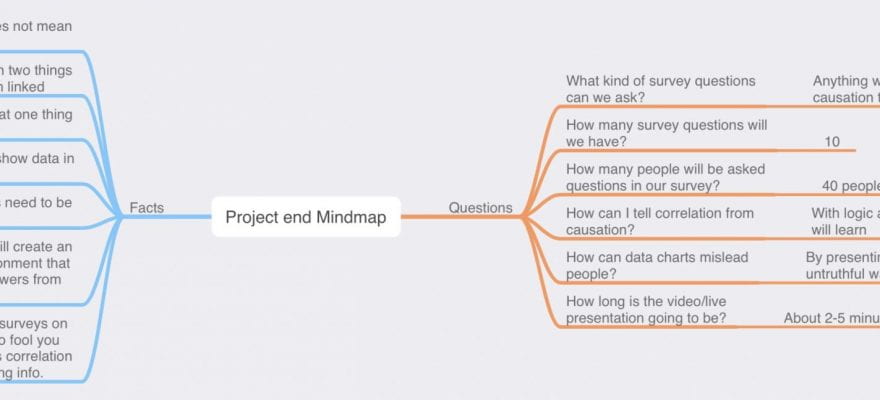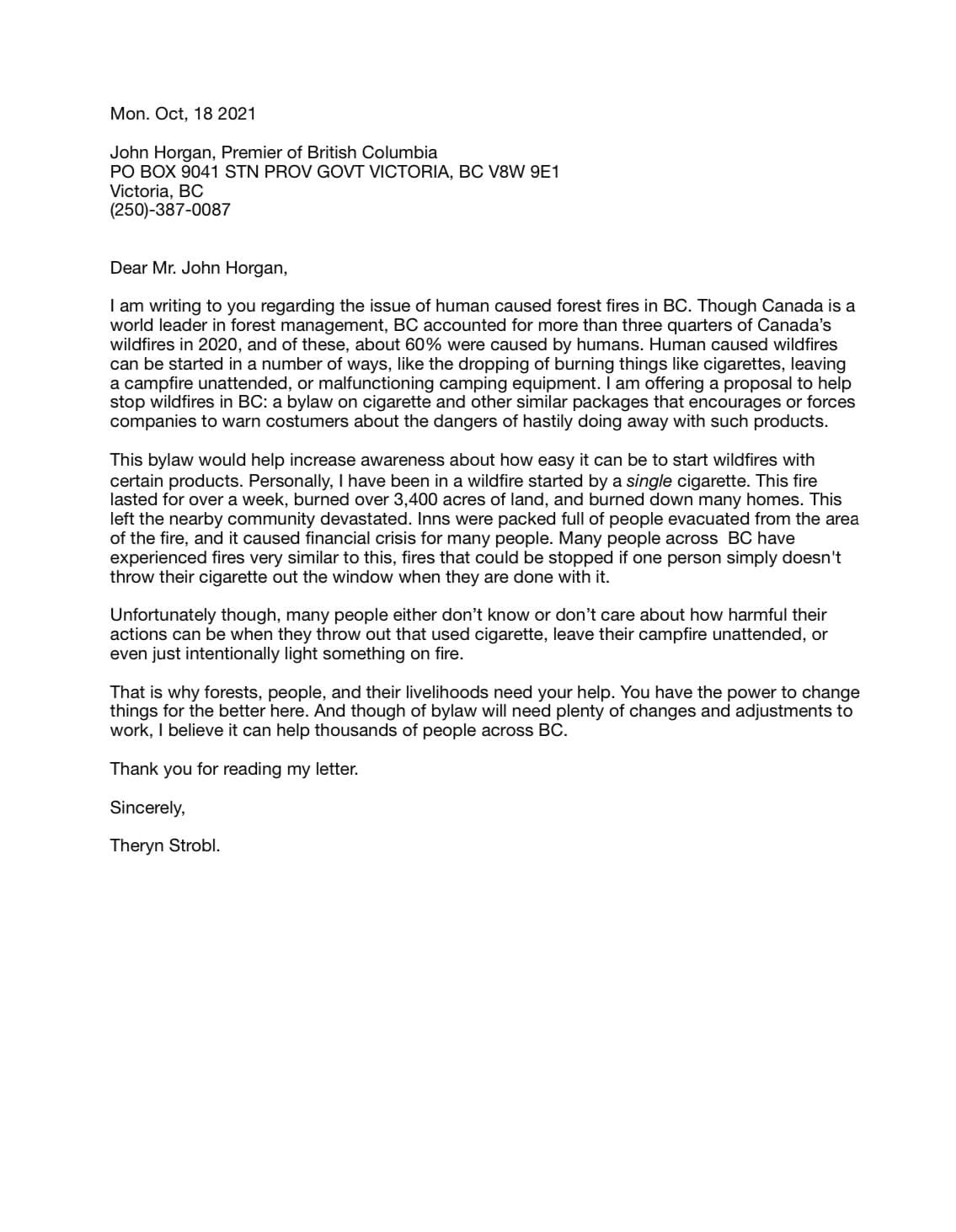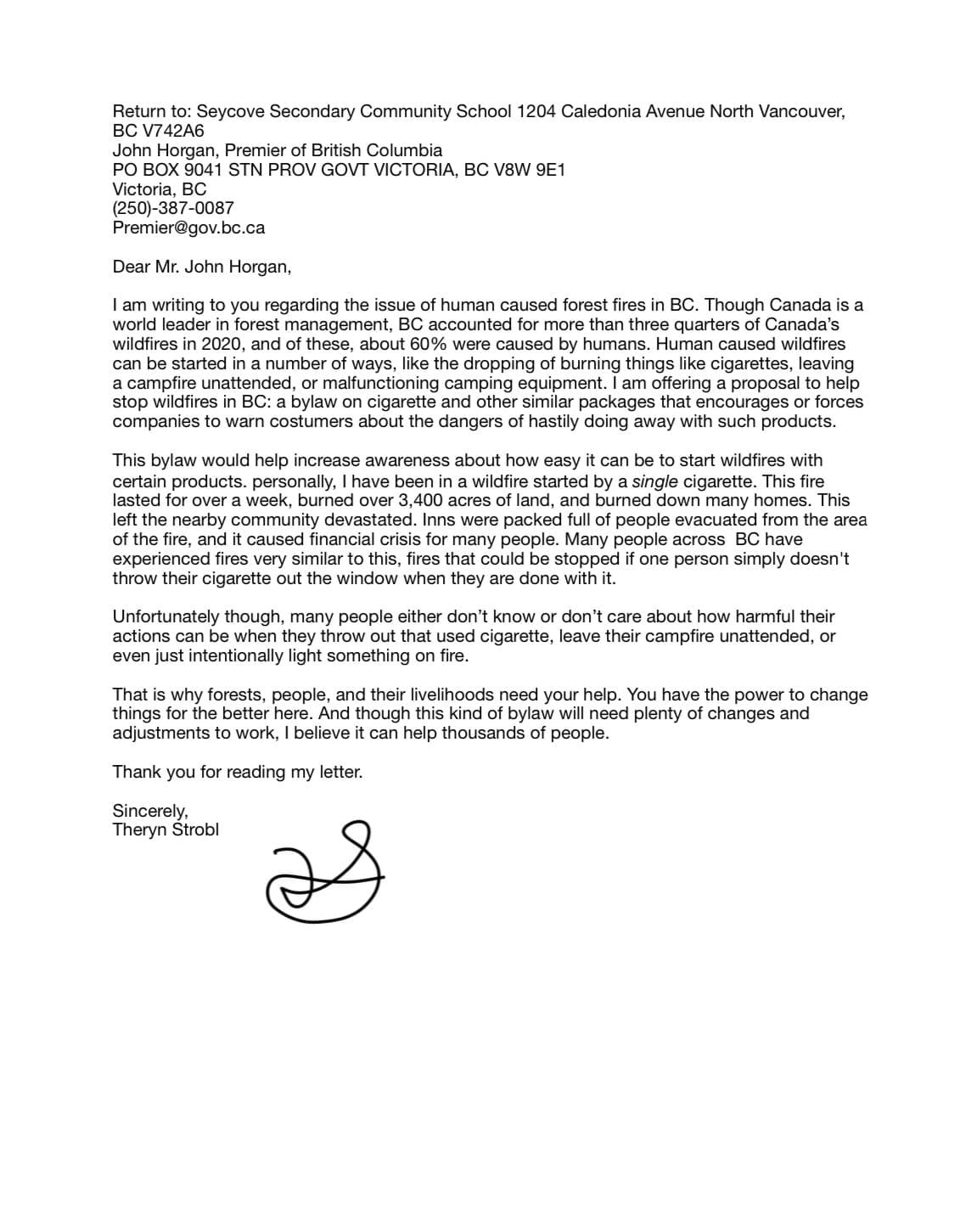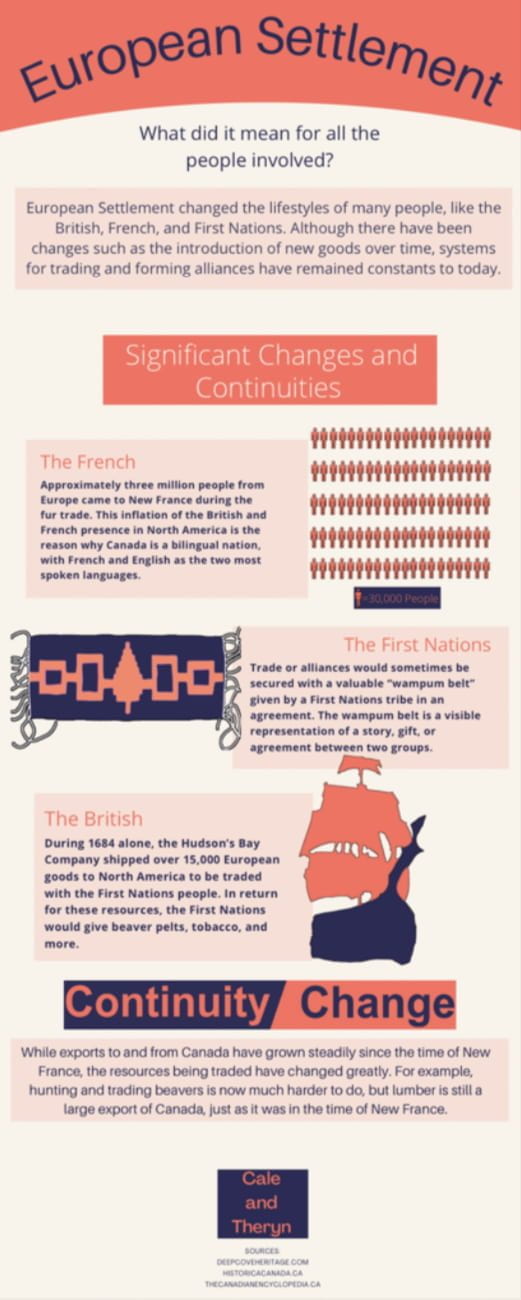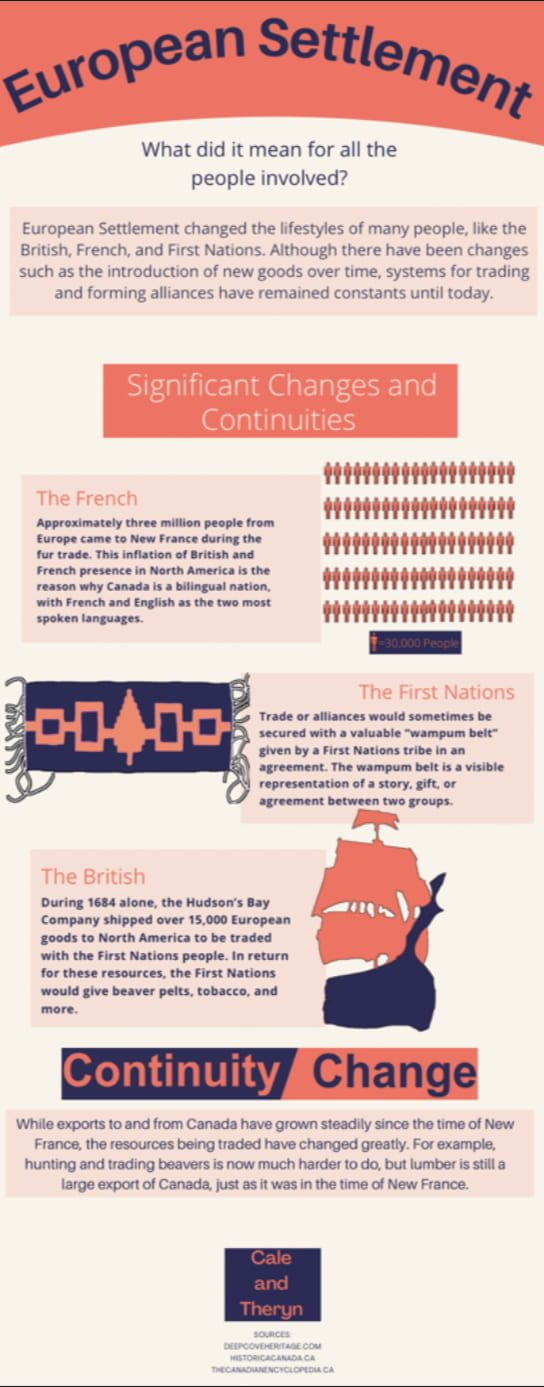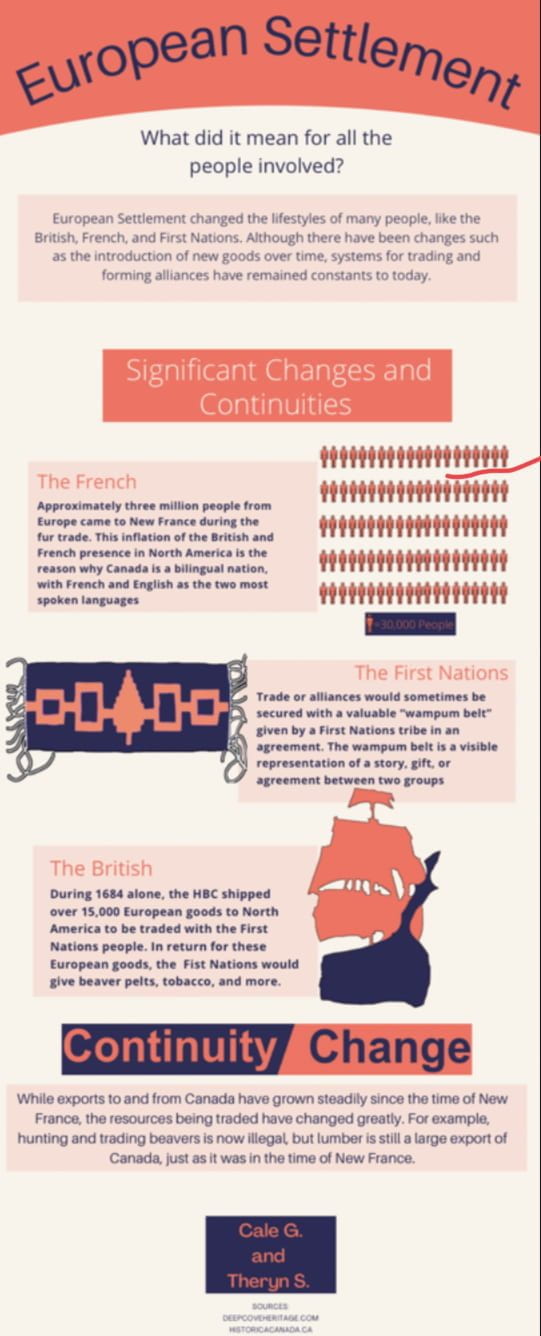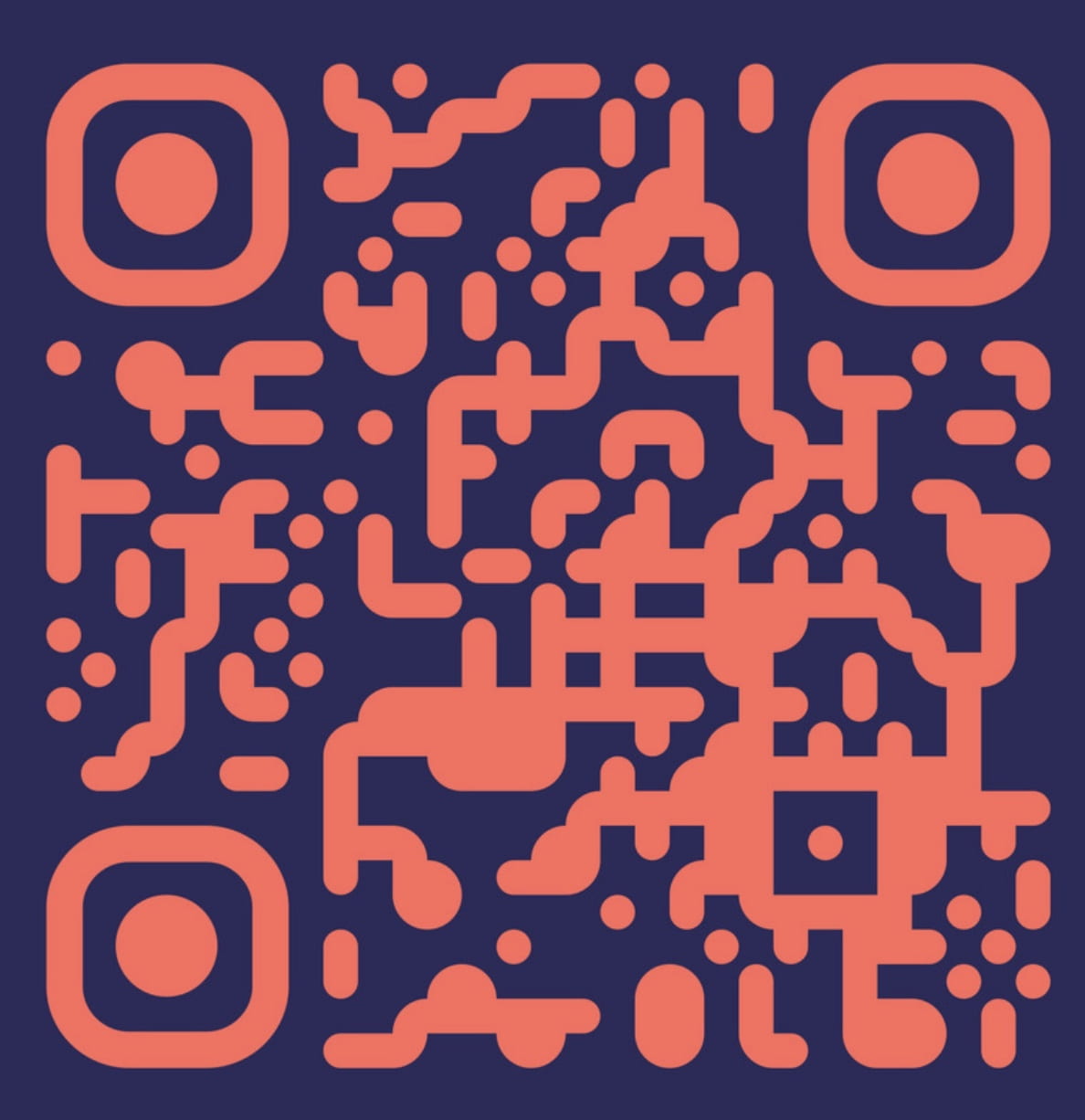As of two days ago when writing this, the latest PLP project just ended. I am writing today about that project, the correlation and causation project. in this project, I learned how to identify correlation and causation, and make surveys and show the results. So, without further ado, here is the post.
To kick off this project, I started the same way I usually do: with a mind map. This Mindmap graphs all the existing knowleadge I have and the question I have onto paper (or pixels).

This project was about correlation and causation. Correlation is a statistical term that evaluated the degree at which two or more things are related. Causation is when those things actually cause eachother.
The final product of this project is a presentation featuring survey results on graphs that show correlation and causation. For the next major milestone in this project, me and my partner had to make a plan for our survey. We had some ideas for what our survey could be, and in the end we made this:
After making this, we assembled and wrote the questions into a survey we made using google forms. We sent this form our via Basecamp, Snapchat, and iMessage. We received 40 responses in total, all of which are 13-18 years olds. We put our results onto graphs, and found no correlation with our original plan. But, we didn’t just ask four questions, we asked more so that we could look through the data to find correlations (almost) no matter what. And with that, we found these two correlations:


Finally, it was time to start working on our final presentation. We started out with an outline of what our presentation would look like
And after that, we made out final presentation, and nothing to notable happened with this.
And then we presented. The presentation went smoothly, though I think we could’ve improved upon it by making our data more clear.
And for the curricular competencies for this project:
Planning and conducting:Select and use appropriate equipment, including digital technologies, to systematically and accurately collect and record data
Two correlations are found using well crafted survey results. The survey results and correlations are are displayed and explained through presentation software. At least two graphs are analyzed to confirm correlation.
Our presentation clearly showed our survey results, correlations and featured two graphs
Communicating and Representing: Use mathematical vocabulary and language to contribute to mathematical discussions
Verbal and pictorial explanations help the audience to understand the circumstances where both correlation and causation are present, and also where a correlation is falsely associated with causation. A Logical explanation for causation is explored for one case.
We showed our exploration into one of the correlations to prove causation which follows a logical course. We also have verbal and pictorial explanations that help guide the audience to a conclusion.
Applying and Innovating: Contribute to care for self, others, community, and world through individual or collaborative approaches
Good ethics are followed when conducting surveys. All class time is used efficiently for learning without distractions.
I used my time wisely and only missed one deadline this whole project.
Well, thanks for reading my post, and I hope you enjoyed it. Stay tuned for the next one.
